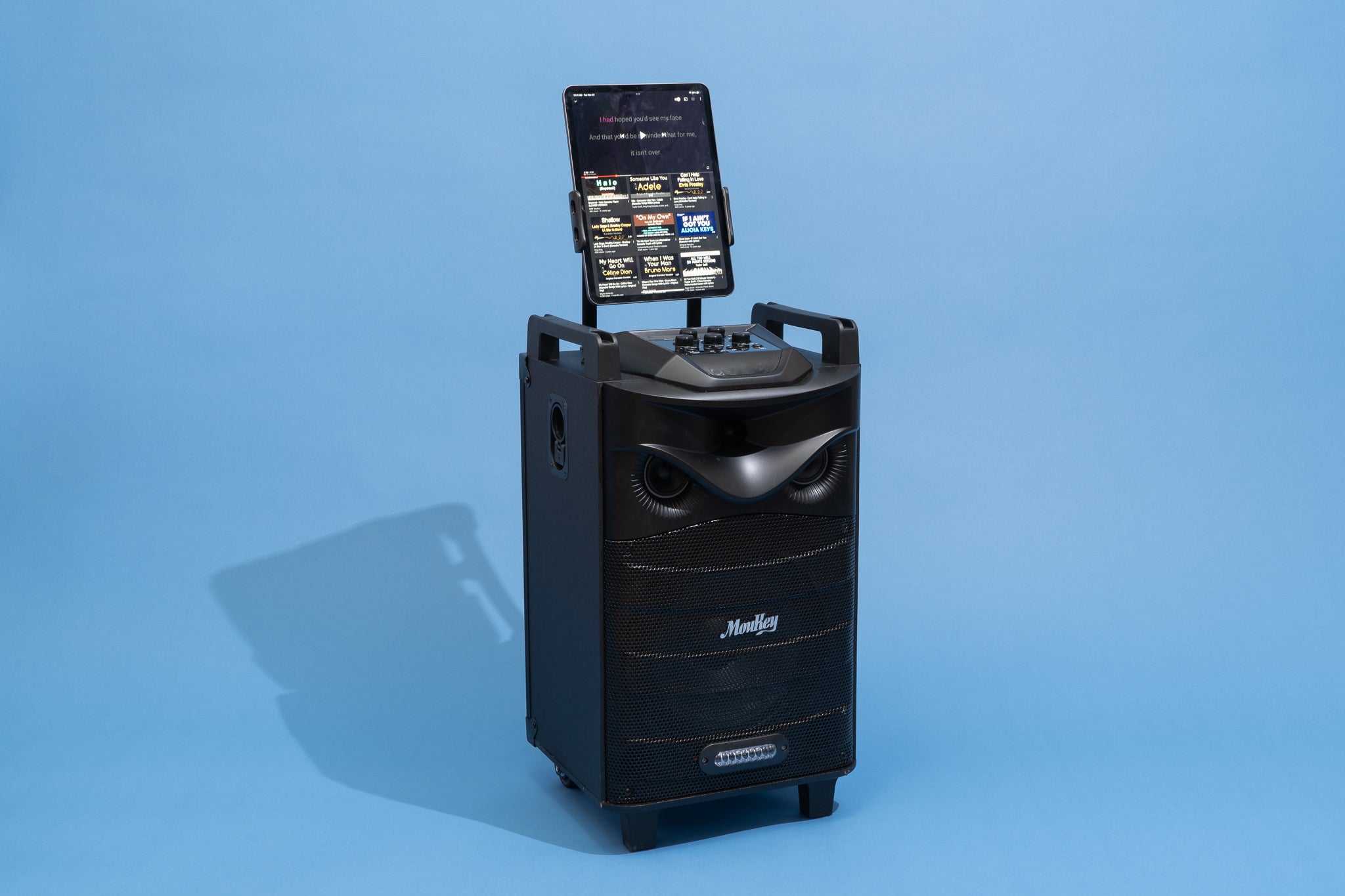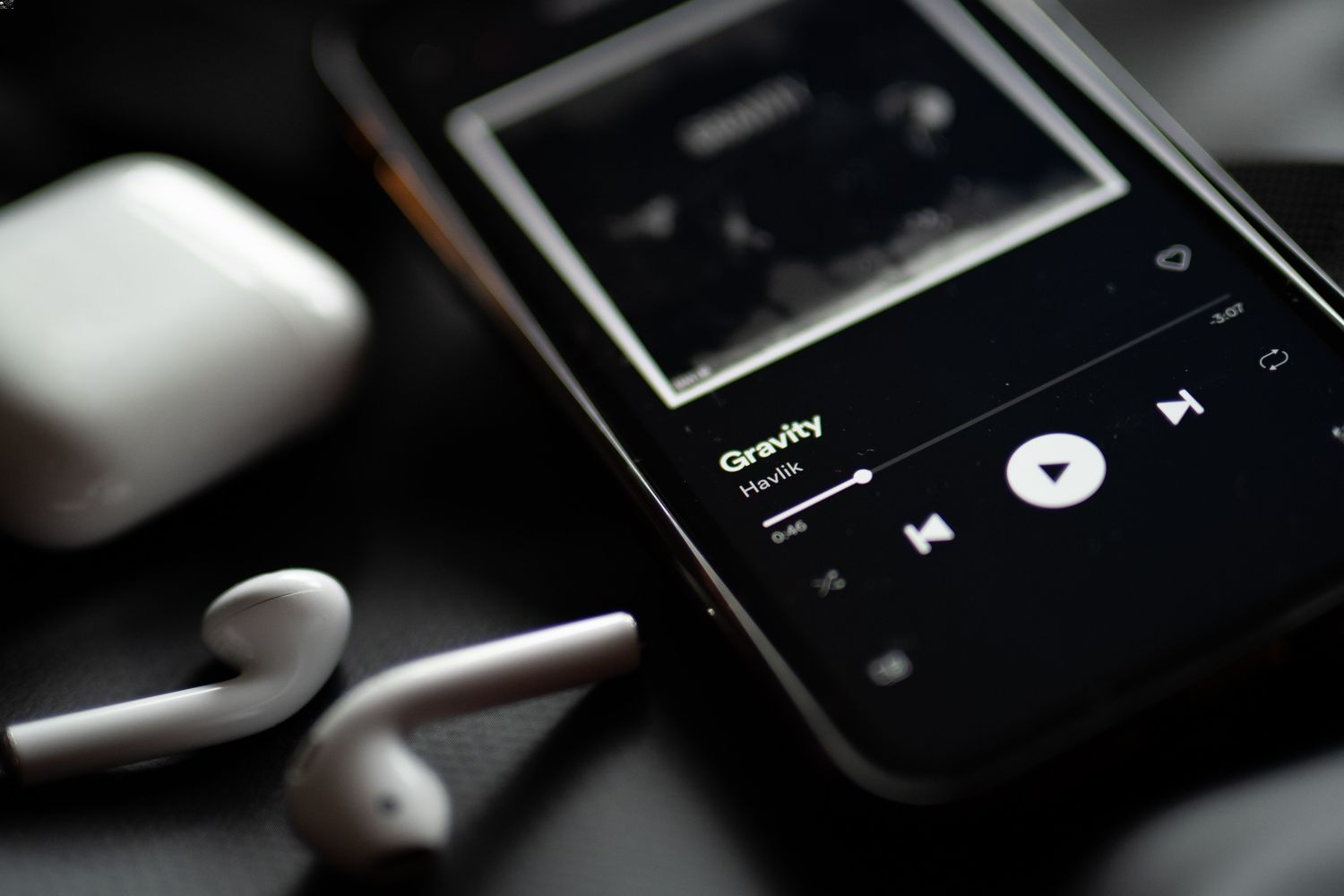Home>Production & Technology>Digital>How To Store Digital Music


Digital
How To Store Digital Music
Published: March 9, 2024
Learn how to store and organize your digital music collection efficiently. Discover the best practices for managing your digital music files.
(Many of the links in this article redirect to a specific reviewed product. Your purchase of these products through affiliate links helps to generate commission for AudioLover.com, at no extra cost. Learn more)
Table of Contents
Introduction
In today's digital age, music lovers have embraced the convenience and flexibility of digital music. With the ability to access vast libraries of songs at the touch of a button, the way we consume and store music has undergone a significant transformation. However, with this shift from physical media to digital files comes the crucial responsibility of effectively managing and safeguarding our digital music collections.
As technology continues to evolve, the options for storing digital music have expanded, offering a diverse range of devices and platforms to cater to different preferences and needs. Whether you're a casual listener or a dedicated audiophile, understanding the best practices for storing digital music is essential to preserving the integrity and longevity of your collection.
In this comprehensive guide, we will explore the key considerations and strategies for storing digital music, from selecting the right storage device to implementing effective organization and backup methods. By delving into these essential aspects, you will gain valuable insights into safeguarding your digital music against loss or corruption, ensuring that your cherished collection remains accessible and secure for years to come.
As we embark on this exploration of digital music storage, it's important to recognize the profound impact that music has on our lives. From uplifting our spirits during challenging times to providing the soundtrack for our most cherished memories, music holds a special place in our hearts. Therefore, it's crucial to approach the storage of digital music with the care and attention it deserves, preserving the artistry and emotional resonance encapsulated within each song.
Join us on this journey as we uncover the best practices for storing digital music, empowering you to curate and protect your collection with confidence and peace of mind. Whether you're a seasoned music enthusiast or a newcomer to the digital music landscape, this guide will equip you with the knowledge and tools to elevate your music storage experience to new heights.
Choosing the Right Storage Device
When it comes to storing digital music, selecting the right storage device is a critical decision that directly impacts the accessibility, security, and overall experience of your music collection. With an array of storage options available, each offering unique features and capabilities, it's essential to assess your specific needs and preferences to make an informed choice.
Consider Capacity and Scalability
The first consideration when choosing a storage device for your digital music is the capacity it offers. Assess the size of your music library and anticipate future growth to ensure that the chosen device can accommodate your collection without running out of space. Additionally, scalability is crucial, as it allows for easy expansion of storage capacity as your music library continues to evolve.
Evaluate Portability and Accessibility
For music enthusiasts who value portability and on-the-go access to their digital music, portable storage devices such as USB flash drives and external hard drives are excellent choices. These devices enable you to carry your music collection with you, whether for travel, social gatherings, or simply enjoying music across multiple devices.
Explore Network-Attached Storage (NAS) Solutions
For those seeking a centralized and versatile storage solution, Network-Attached Storage (NAS) devices offer a compelling option. NAS systems provide a dedicated network storage environment, allowing seamless access to your music library from various devices within your home network. This approach is ideal for households with multiple music enthusiasts who wish to share and stream their collections across different devices.
Embrace Cloud Storage Services
In the era of cloud computing, leveraging cloud storage services for digital music has become increasingly popular. Platforms such as Google Drive, Dropbox, and Amazon Music offer secure and convenient cloud storage solutions, enabling you to upload, organize, and access your music library from virtually anywhere with an internet connection.
Prioritize Data Redundancy and Reliability
Regardless of the storage device chosen, prioritizing data redundancy and reliability is paramount. Implementing redundant storage configurations, such as RAID (Redundant Array of Independent Disks), can safeguard your music collection against potential data loss due to hardware failures. Additionally, selecting storage devices from reputable manufacturers known for reliability and durability enhances the long-term security of your digital music.
By carefully considering these factors and exploring the diverse range of storage devices available, you can make an informed decision that aligns with your specific requirements and enhances the enjoyment of your digital music collection. Whether you prioritize portability, network accessibility, or cloud-based convenience, the right storage device serves as the foundation for preserving and accessing your cherished music library with ease and peace of mind.
Organizing Your Digital Music Collection
Effectively organizing your digital music collection is essential for seamless navigation, efficient playback, and a gratifying listening experience. Whether your music library consists of a few favorite albums or an extensive catalog spanning various genres, implementing a structured organizational system ensures that you can easily locate and enjoy your favorite tunes. Here are key strategies for organizing your digital music collection:
Tagging and Metadata Management
Begin by meticulously tagging your music files with accurate metadata, including artist names, album titles, track numbers, and genres. This information not only facilitates quick search and sorting functions but also enhances the overall organization and presentation of your music library. Utilize music management software or dedicated tagging tools to streamline this process and ensure consistency across your entire collection.
Folder Structure and File Naming
Establishing a logical folder structure and consistent file naming conventions contributes to a well-organized music library. Group your music files into categorized folders based on genres, artists, or albums, allowing for intuitive navigation and management. Additionally, adopting a standardized file naming format, such as "Artist – Album – Track Number – Song Title," further enhances the clarity and organization of your digital music collection.
Playlist Curation
Create curated playlists tailored to specific moods, activities, or occasions, offering personalized compilations of your favorite tracks. Whether it's a high-energy workout playlist, a relaxing evening mix, or a themed compilation for a road trip, playlists add a personalized touch to your music collection, making it easy to access the perfect soundtrack for any moment.
Album Artwork Integration
Incorporating high-quality album artwork into your digital music files enriches the visual appeal of your collection and contributes to a more immersive listening experience. Ensure that each album is accompanied by its corresponding artwork, enhancing the aesthetic presentation of your music library and providing visual cues for quick identification.
Removal of Duplicates and Incomplete Files
Regularly audit your music library to identify and remove duplicate tracks and incomplete files, optimizing storage space and streamlining the organization of your collection. Utilize specialized software to identify and manage duplicate entries, ensuring that your music library remains clutter-free and efficient.
By implementing these organizational strategies, you can transform your digital music collection into a well-structured and easily navigable library, enhancing the enjoyment and accessibility of your favorite tunes. Whether you're exploring new releases, revisiting classic albums, or curating personalized playlists, a thoughtfully organized music collection sets the stage for a rewarding and immersive listening experience.
Backing Up Your Digital Music
Ensuring the safety and longevity of your digital music collection is paramount, making the implementation of robust backup strategies a fundamental aspect of music storage. Backing up your digital music serves as a safeguard against potential data loss due to hardware failures, software errors, or unforeseen events, preserving your cherished collection for years to come.
Local Backup Solutions
One of the most common and reliable methods for backing up digital music involves creating local copies of your music library on external storage devices. Utilizing external hard drives, USB flash drives, or network-attached storage (NAS) systems, you can create redundant copies of your music files, providing an additional layer of protection against data loss. Regularly updating these local backups ensures that your music collection remains resilient in the face of hardware malfunctions or accidental file deletions.
Cloud-Based Backup Services
Embracing cloud-based backup services offers a convenient and secure approach to safeguarding your digital music. Platforms such as Google Drive, Dropbox, and Apple iCloud enable you to upload and synchronize your music library to remote servers, protecting it from potential local storage failures or disasters. Cloud-based backups also provide the advantage of accessibility from any internet-connected device, allowing you to retrieve and restore your music collection with ease, regardless of your physical location.
Automated Backup Software
Implementing automated backup software streamlines the process of preserving your digital music, reducing the risk of oversight or neglect. These software solutions enable scheduled backups, ensuring that any new additions or modifications to your music library are promptly and systematically backed up without requiring manual intervention. By automating the backup process, you can maintain the integrity of your music collection with minimal effort, enhancing its resilience against unforeseen data loss events.
Redundancy and Verification
Incorporating redundancy into your backup strategy further fortifies the security of your digital music. Utilizing redundant backup copies across multiple storage devices or cloud platforms minimizes the risk of complete data loss in the event of a single backup failure. Additionally, regularly verifying the integrity of your backup files through checksum verification or backup validation processes ensures that your music collection remains accurately preserved and accessible when needed.
By integrating these backup strategies into your digital music storage regimen, you can fortify the resilience of your music collection against potential data loss scenarios. Whether through local backups, cloud-based solutions, automated software, or redundancy measures, prioritizing the protection of your digital music ensures that your cherished collection remains safe, accessible, and ready to accompany you through life's most memorable moments.
Protecting Your Digital Music from Loss or Corruption
Safeguarding your digital music from potential loss or corruption is a critical endeavor, ensuring that your cherished collection remains intact and accessible for years to come. By implementing proactive measures and best practices, you can fortify the resilience of your digital music library, mitigating the risks associated with data loss and corruption.
Implement File Integrity Checks
Regularly conducting file integrity checks on your digital music files is essential for identifying and addressing potential data corruption. Utilize specialized software tools capable of verifying the integrity of audio files through checksum validation or error detection algorithms. By routinely validating the integrity of your music files, you can promptly identify any instances of corruption and take corrective actions to preserve the quality and authenticity of your collection.
Utilize Error-Correction Techniques
Incorporating error-correction techniques into your digital music storage strategy enhances the robustness of your music files against potential data corruption. Many modern audio playback and management software offer error-correction features that can automatically detect and rectify minor errors or discrepancies within music files. By enabling these error-correction capabilities, you can proactively mitigate the impact of data corruption, ensuring that your music remains free from imperfections and playback disruptions.
Protect Against Malware and Cyber Threats
Mitigating the risks posed by malware and cyber threats is crucial for safeguarding your digital music collection. Implement comprehensive antivirus and anti-malware solutions to protect your storage devices and network environments from potential security breaches. Additionally, exercise caution when downloading music files from unverified sources, as malicious software and corrupted files pose a significant threat to the integrity of your music library. By maintaining a secure digital environment, you can minimize the likelihood of data corruption and unauthorized access to your music collection.
Temperature and Environmental Controls
Ensuring that your storage devices are housed in suitable environmental conditions is essential for preventing physical damage and data corruption. Protect your storage devices from extreme temperatures, humidity, and environmental contaminants that can compromise the integrity of your digital music files. By storing your devices in controlled environments and utilizing protective enclosures when necessary, you can prolong the lifespan of your storage media and mitigate the risks associated with environmental damage.
Regular Maintenance and Monitoring
Conducting regular maintenance and monitoring of your storage devices and music files is instrumental in identifying and addressing potential vulnerabilities. Periodically inspect your storage devices for signs of wear, damage, or performance degradation, taking proactive measures to address any issues that may compromise the integrity of your music collection. Additionally, monitor the health and performance of your storage devices through diagnostic tools and software, ensuring that any emerging issues are promptly addressed to maintain the security and stability of your digital music.
By embracing these protective measures and integrating them into your digital music storage practices, you can fortify the resilience of your music collection against potential loss or corruption. Whether through file integrity checks, error-correction techniques, cybersecurity measures, environmental controls, or proactive maintenance, prioritizing the protection of your digital music ensures that your collection remains a source of joy and inspiration, ready to accompany you through life's most memorable moments.
Conclusion
In the ever-evolving landscape of digital music, the art of storing and safeguarding our cherished collections holds profound significance. As we navigate the vast realm of storage devices, organization strategies, backup methodologies, and protective measures, it becomes evident that the preservation of digital music transcends mere data management. It is a testament to our passion for music, a commitment to honoring the artistry of our favorite artists, and a celebration of the timeless melodies that enrich our lives.
By delving into the intricacies of choosing the right storage device, we empower ourselves to tailor our music storage experience to our unique preferences and lifestyle. Whether embracing the portability of external drives, the versatility of network-attached storage, or the convenience of cloud-based solutions, the choice of storage device becomes a reflection of our individuality and the value we place on our music collections.
The art of organizing our digital music transcends mere file management; it is an act of curation and storytelling. Through meticulous tagging, thoughtful playlist curation, and the integration of album artwork, we breathe life into our digital libraries, transforming them into immersive sonic landscapes that resonate with our emotions and memories.
As we embrace the imperative of backing up our digital music, we acknowledge the irreplaceable nature of our collections and the responsibility to safeguard them for the future. Whether through local backups, cloud-based solutions, or automated software, the act of preserving our music becomes a testament to the enduring legacy of the melodies that have shaped our lives.
In our quest to protect our digital music from loss or corruption, we recognize the fragility of data and the resilience of our passion for music. By implementing file integrity checks, error-correction techniques, cybersecurity measures, and environmental controls, we fortify the longevity of our collections, ensuring that they remain steadfast companions on our life's journey.
In conclusion, the storage of digital music transcends the realm of technology; it is an expression of our love for music, a dedication to preserving the melodies that have woven themselves into the fabric of our lives. As we navigate the intricacies of digital music storage, let us approach it with reverence, creativity, and a commitment to safeguarding the timeless artistry that continues to inspire and uplift us.











